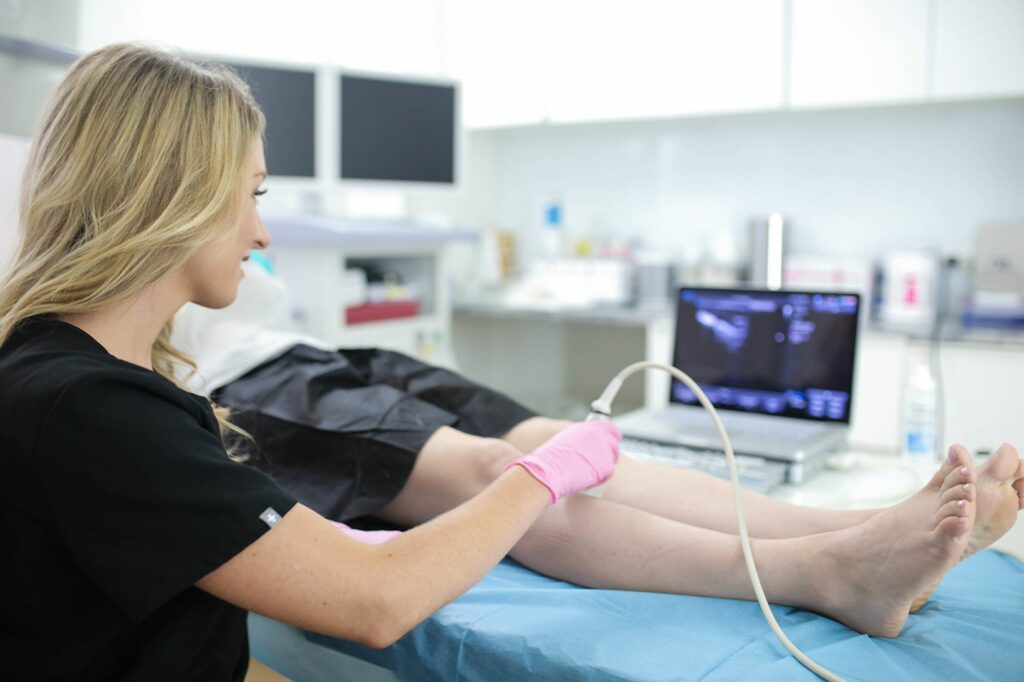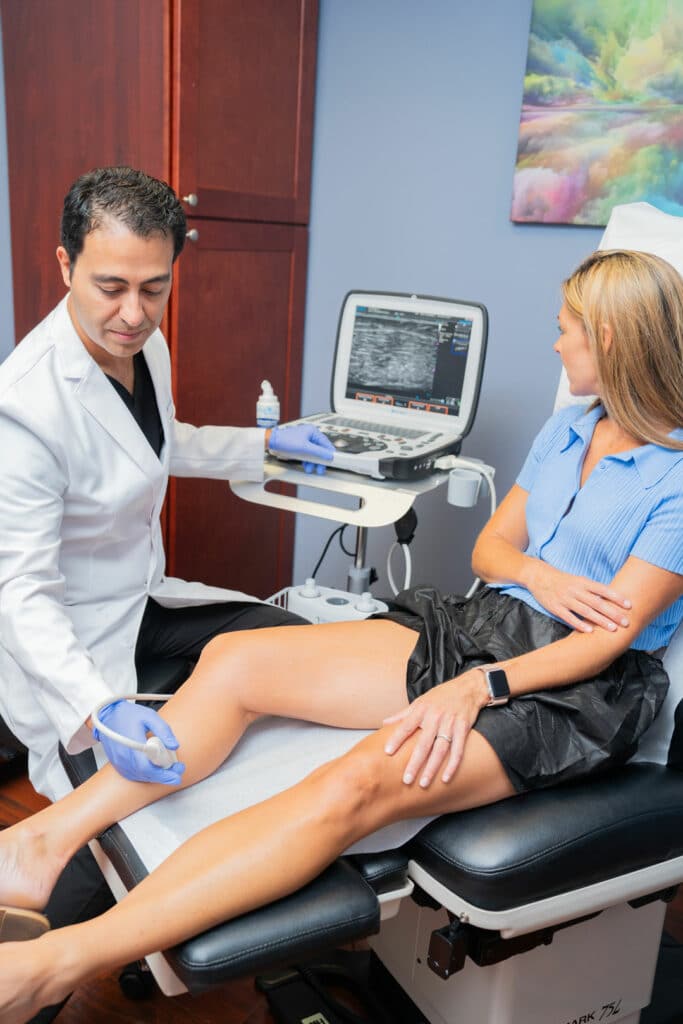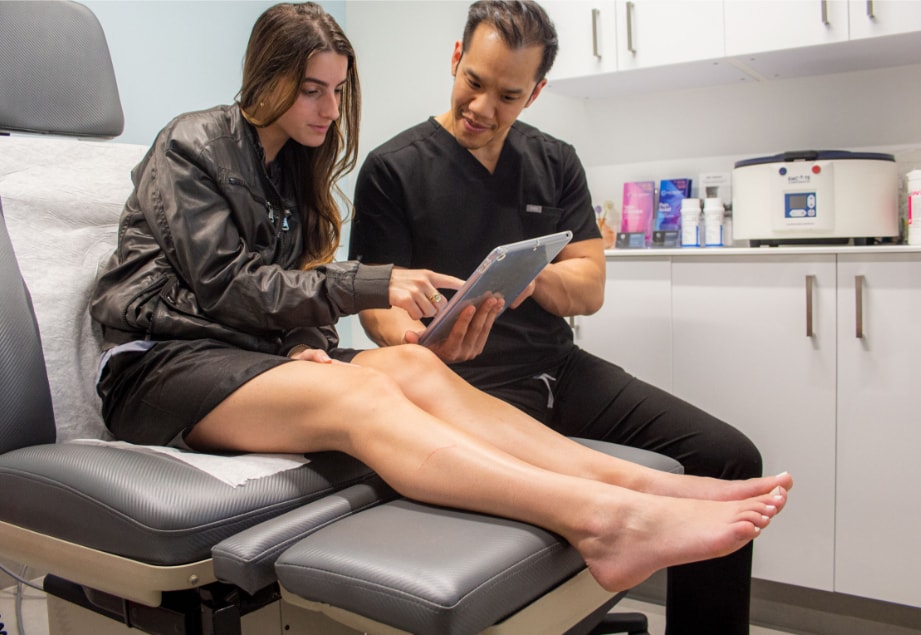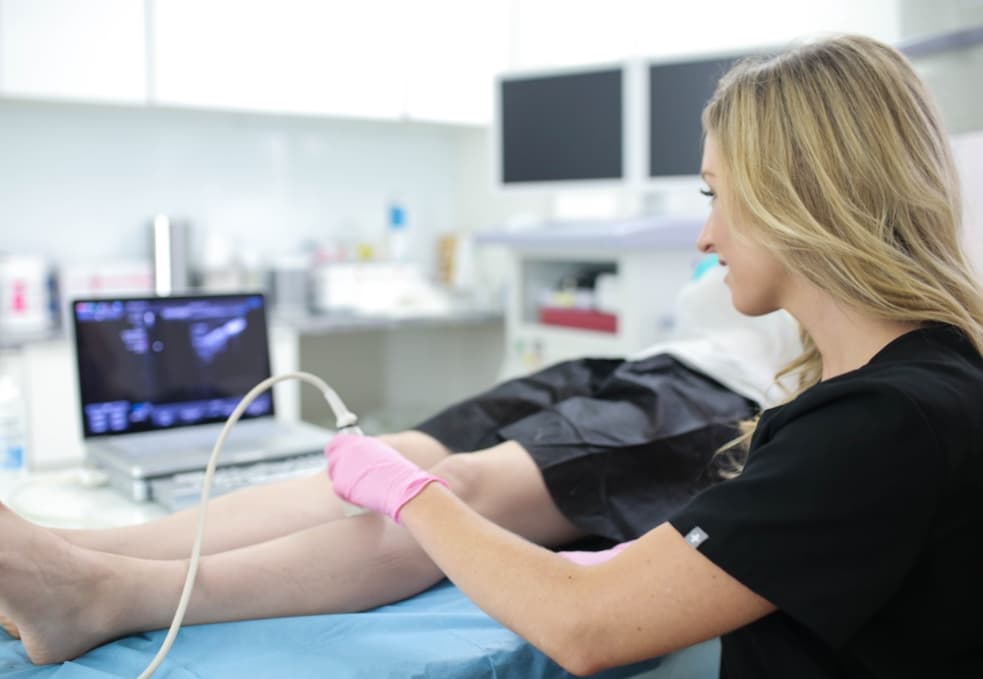Do spider veins go away on their own?
If you have spider veins on your legs, you may wonder, “do spider veins go away on their own?” Most people with spider veins usually wait for several weeks or months before seeing treatment because they assume spider veins will simply fade away. But that’s not accurate. Once you get spider veins, the only way to eliminate them is through minimally invasive spider vein treatments at a reliable vein center in Maryland.
Spider veins are dense clusters of damaged blood vessels and broken capillaries on the legs. The damaged blood vessels appear in web-like formations on the skin’s surface, just underneath the epidermis. As blood continues accumulating in leg veins, you develop new spider veins and they spread outwards. The longer you delay spider vein treatments, the more spider veins you develop.
The Vein Center in Maryland is led by board-certified vein doctors specializing in cutting-edge treatments for spider veins, varicose veins, and other vein problems. Our vein doctors use advanced diagnostic techniques to identify the root cause of your spider veins and curate a personalized vein treatment plan. Once we remove spider veins, we ensure you don’t develop new spider veins because of the same condition.
Please schedule an appointment to explore your spider vein treatment options.

Why do I have spider veins on my legs?
Spider veins are thick veins that appear on your skin’s surface because of excess blood accumulation in the leg veins. Spider veins can occur without underlying medical conditions, but most spider veins are symptomatic of chronic venous insufficiency, the circulatory disorder responsible for most vascular problems.
Chronic venous insufficiency is a medical condition wherein your vein valves malfunction or collapse. When the vein valves collapse, blood flows backward due to gravity and accumulates in the leg veins, eventually leading to increased vascular dilation and spider veins. Venous insufficiency is a chronic condition, so blood continues accumulating in the leg veins, leading to new spider veins and varicose veins.
Why are the veins popping out on the legs?
Spider veins usually remain underneath the skin’s surface — they don’t bulge outwards. If your veins are popping out on the legs, you may have varicose veins, yet another symptom of chronic venous insufficiency. Varicose veins are thick veins that bulge out of the skin’s surface, usually looking like a mass of twisted, knotted, tangled, and rope-like blood vessels. They usually appear on the lower extremities of the body, but they can also appear anywhere else.
Why am I all of a sudden getting varicose veins?
If you are suddenly getting varicose veins, you probably have chronic venous insufficiency. Venous insufficiency is a medical condition wherein the collapse of vein valves leads to backward blood circulation and the accumulation of blood in leg veins, which, in turn, leads to spider veins and varicose veins. In most cases, varicose veins are an advanced symptom of vein disease, and they appear because of excess blood accumulation in saphenous veins.
You might think your varicose veins have appeared suddenly, but it’s more likely that you’ve simply ignored the early warning signs of vein disease. The earliest warning signs of vein disease are extremely mild and often misattributed to aging or exhaustion. If you notice leg heaviness, frequent leg cramps, restless leg syndrome, leg pain, and skin discoloration, you may soon develop varicose veins. You should consult a vein doctor when you notice the first signs and symptoms of vein disease.
Can you fix spider veins naturally?
You can’t fix spider veins naturally. Spider veins occur because of a damaged vein valve, which leads to excess blood accumulation in the leg veins. The only way to treat spider veins permanently is to close the diseased saphenous vein responsible for your vein problems and then remove/ destroy the unhealthy spider veins. Natural remedies may alleviate the symptoms of vein disease and prevent the condition from worsening, but they won’t fix spider veins.
The following are the most effective natural remedies to reduce the symptoms of vein disease:
- Wear compression stockings to apply pressure on your leg veins and improve blood flow.
- Engage in workouts and exercises that improve blood circulation to the heart and activate your calf muscles, such as running, cycling, swimming, and yoga.
- Elevate your legs above your heart’s level while sitting down.
- Don’t sit or stand still for long periods of time — take short walking breaks in between.
How do you shrink spider veins?
Vein doctors perform sclerotherapy to shrink and remove spider veins. Sclerotherapy involves the careful injection of a sclerosant medicine into the unhealthy spider veins. The sclerosant medicine fuses the spider veins’ walls together, turning them into hardened scar tissues that eventually shrink and get absorbed by the body, fading away from the skin’s surface. The treatment is completely safe and painless, and it usually concludes within 30 minutes with no harsh side effects, complications, or downtime.
Is walking good for varicose veins?
Walking is certainly good for varicose veins because it improves blood circulation and pushes the accumulated blood towards the heart, reducing the symptoms of vein disease. But walking won’t fix, cure, or treat varicose veins. The only way to treat varicose veins is through minimally invasive vein treatments, such as radiofrequency ablation and ambulatory phlebectomy.
What can get rid of varicose veins?
Our vein doctors perform a thorough medical evaluation to diagnose the root cause of varicose veins. If you have vein disease, your vein treatment plan may start with radiofrequency or laser ablation, which involves using thermal or laser energy to destroy the diseased saphenous vein responsible for your vein problems. After destroying the diseased vein, the vein doctor performs an ambulatory phlebectomy to extract all the superficial varicose veins through small incisions on the skin. The entire procedure concludes within 30 minutes.
The specific details of the varicose vein treatment will depend on your specific condition, symptoms, goals, and lifestyle. Please schedule an appointment to explore your spider vein and varicose vein treatment options.





